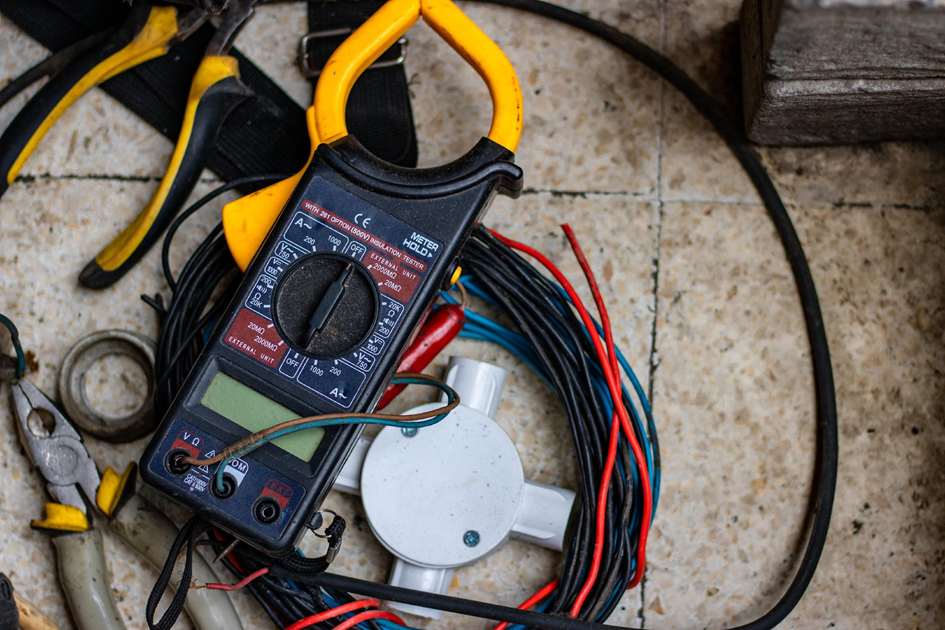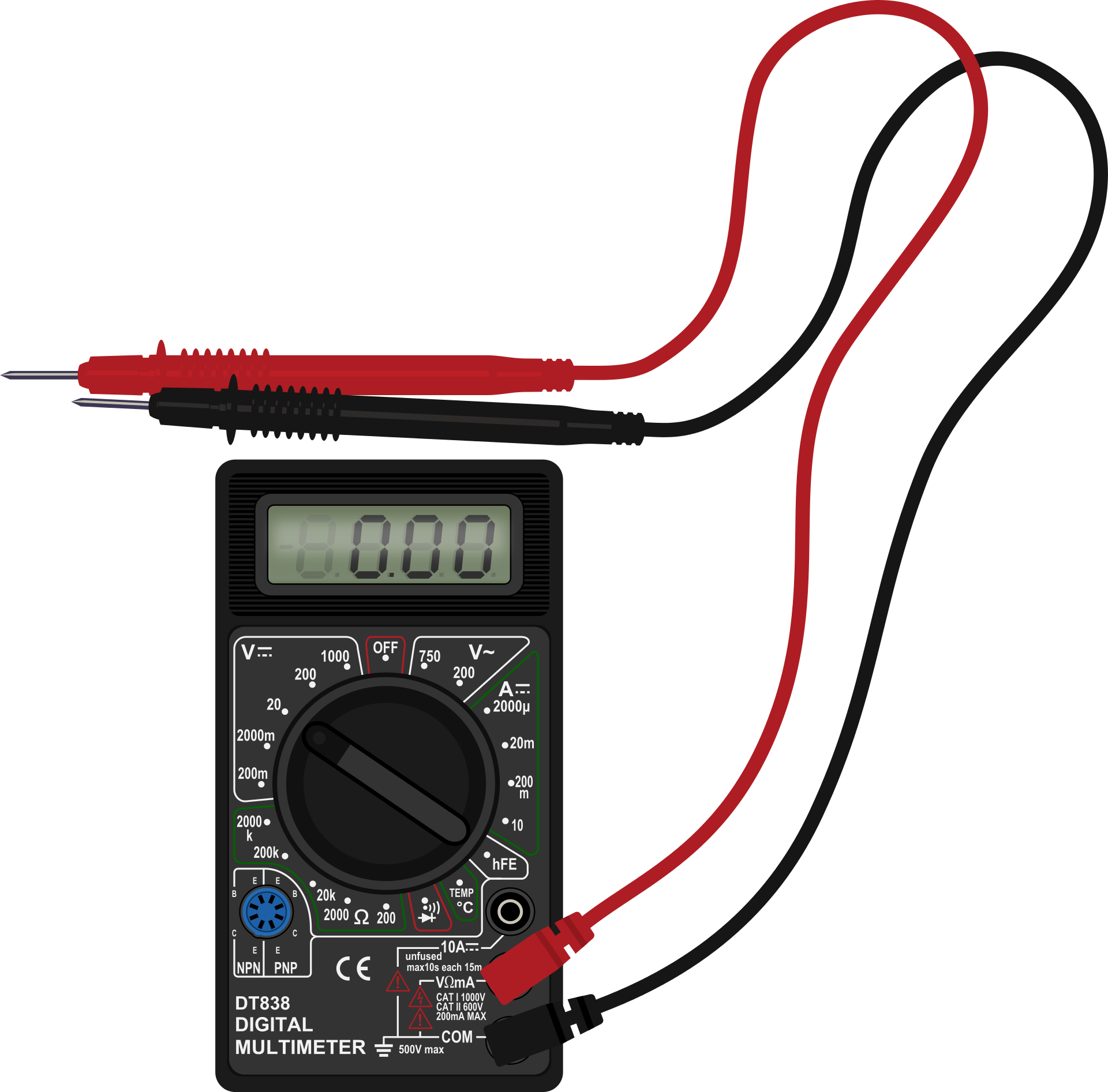Testing instrument: Why it's Important, How It Works, Types, Uses, and Safety
Testing instruments are as significant as the
instrumentation equipment in the UAE itself in every discipline of engineering. It aids in evaluating instrument performance and locating faults. In this article, we’ll examine Electrical/Electronic Testing instrument, including its operation, kinds, significance, typical applications, and safety considerations. The testing instruments manufacturers provide a comprehensive selection of testing instruments for offering the greatest measurement precision and quality.

What do you mean by testing instruments?
Testing instruments are used to generate signals and measure the electrical/electronic DUTs' reactions (Devices Under Test). On this basis, it is simple to demonstrate the DUT's appropriate functionality and to identify any defects in the device.
How a Testing Instrument Operates
A Testing instrument determines the health of the DUT by comparing its output to the ideal value. An appropriate voltage, current, or signal is injected into the tested circuit or component. The system then compares the measured value to the predicted outcome.
Testing instrument has its own internal circuit, which performs the required conversions and calculations to give us the pertinent data on the circuit/component being tested. Each piece of testing instruments are intended to fulfill a certain job.
Why Testing instrumentation equipment in the UAE is Necessary?
The performance of all electrical or electronic instruments tends to deteriorate over time because of normal wear and component material deterioration caused by exposure to heat, shock, vibration, and other environmental factors.
Consequently, the likelihood of instrument failure and electric shock increases with time. Therefore, routine calibration and testing of all electrical and electronic instrumentation equipment in the UAE is always recommended.
Voltage/current/capacitance/resistance/inductance, etc., must be considered if we are to discuss the measuring aspects of electronics. If testing/finding a defect in a circuit is essential, none of the electrical values should be ignored. In order to assess the condition/defect of each component of a circuit, we must consider all electrical values and verify their accuracy.
Today, if we consider practical electrical/electronic engineering, i.e., field work, we should be able to use a variety of testing instrument ranging from the very simple and inexpensive, such as a tester (a test light consisting of a light bulb and a test lead), to the complex and sophisticated, such as a Digital Oscilloscope.
Types of Electrical/ Electronic Testing instrument
There are several kinds of testing instruments available for specialized applications. Listed below are some of the most popular and widespread kinds of Testing instruments:
- Digital Multimeter
- Clamp Meter (Tong Tester)
- Shock Pulse Meter
- Digital Oscilloscope
- Wee Megger
- Stroboscope
- Electric Motor Checker (EMC)
- Instrumentation Amplifier
- Owen Bridge Circuit
- Analog Voltmeter
- Digital Voltmeter
- Frequency Counter
- Resistance Temperature Detector (RTD)
- Signal Generator
- Spectrum Analyzer
- Neon tester
Digital Multimeter
Digital Multimeter is electronic instrumentation equipment in the UAE for measuring AC/DC voltage and displaying the results in digital numeric format. It has successfully replaced its antiquated analog equivalent, the multimeter with a fixed scale and a needle that points to the reading. This testing device is also capable of measuring the continuity of a wire or circuit. Measurement instrument suppliers keep in mind to provide high quality instrument.

Clamp Meter (Tong Tester)
Clamp meter is also often known as Tong Tester. It’s simple to use and helpful for measuring live conductors without causing damage or shutting down the circuit. One of the greatest advantages of this instrument is the ability to measure a high-value current without powering down the circuitry being evaluated.
Shock Pulse Tester
A Shock-Pulse-Tester is an highly important piece of testing instrument for assessing the inner condition of a bearing when it cannot be opened. It is multipurpose and may be used as a Shock-pulse-tester, Vibration-meter, and Tachometer.
Digital Oscilloscope
A 'Digital Oscilloscope' is an electrical testing instrument used to measure and compare a signal's time-dependent graph. It is one of the most popular and versatile pieces of testing instruments used to test even the newest electronic circuits. This testing apparatus gives graphical depiction and analytical data about the signal amplitude (Voltage/Current/Power, etc.) as a function of time. This is very helpful for analyzing the state and performance of the circuit/instrument.
Wee Megger
Wee-Megger is a kind of self-contained high-generator that is helpful for determining the insulation and high resistive value of instrumentation equipment UAE. Due to the very low current produced by battery-powered testing instrument, it is extremely difficult and less accurate to measure a big resistance with it. To accurately measure it, it is necessary to use a big current. The second need for using a high current is to detect any insulation damage.
Stroboscope
Stroboscopes are often referred to as strobes. A stroboscope is a testing instrument used to make a cyclically revolving object look sluggish or stationary. In other terms, a Stroboscope is a monitoring and measurement instrument that uses stroboscopic effects to observe fast periodic movements.
Electric Motor Checker (EMC -22)
The Electric Motor Checker is a highly valuable testing instrument that may be used to quickly and easily discover electrical faults (such as short-circuit, open-circuit, damage to insulating material, etc.) in motors/motors/another three-phase instrumentation equipment UAE. However, this Electric Motor Checker may only be used on stationary motors.
Instrumentation Amplifier
The Instrumentation Amplifier (In-Amp) is a fundamental element of all measuring instruments and testing instruments. The Instrumentation Amplifier is a form of Differential Amplifier that provides excellent Common-Mode Rejection. Instrumentation Amplifiers are available as integrated circuits and may also be constructed utilizing Op-amps and Precision Resistors with very low tolerance values.
Owen Bridge
The Owen Bridge is a testing instrument used to measure inductance in terms of capacitance. Using the comparison principle, the unknown inductor's value is compared to that of the standard capacitor.
AC Bridge employs typical capacitor, inductor, and variable resistors coupled to an AC source for excitation, similar to Hay's and Maxwell bridges.
Analog Voltmeter
Voltmeters are measuring devices that measure the voltage between two nodes in an electric circuit. In analog voltmeters, the pointer traverses a scale proportional to the circuit's voltage. Digital voltmeters show voltage numerically using an analog-to-digital conversion.
Voltmeters placed permanently are used to monitor generators and other fixed instrumentation equipment UAE. A multimeter is built into portable tools to measure current and resistance. In electrical and electronic work, these are the usual testing instruments.
Digital Voltmeter
DVM is a device used to measure the electrical potential difference between two locations in a circuit. The voltage might be direct current (DC) or alternating current (AC) (DC). After converting analog voltage to digital voltage, it measures the input voltage and displays it in numerical representation using a converter. The use of a digital voltmeter has enhanced the speed and precision of taking readings. A typical veterinarian is seen below.
Frequency Counter
The Frequency counter is a piece of testing instrument used to measure the Signal-frequency generated by a Sine wave generator or oscillator. It is incredibly simple to set up and use. Only the signal frequency (to be monitored) is required as an input to the frequency counter. It measures the frequency of the transmission and displays the result in digital format. testing instruments manufacturers make highest quality of instruments.
Resistance Temperature Detector (RTD)
The Resistance Temperature Detector (RTD) is a temperature sensor that measures temperature by correlating the element's resistance to temperature.
The resistance of the components used in Resistance Temperature Detectors is stated in ohms at zero degrees Celsius (C). The most widely used RTD standard is 100 ohms. This indicates that the element of a Resistance Temperature Detector must have a resistance of 100 Ohms at 0 degrees Celsius.
Signal Generator
As its name indicates, the Signal generator is an electrical device that can generate a Sinewave (Volt) signal and has a broad frequency/amplitude range. It can create desired signals with exceptional precision. Due to this quality, this instrumentation equipment UAE is used to establish required test-conditions to determine if the performance of electronic instrument is optimum or suboptimal. It may also be used to substitute a signal that is unavailable in an apparatus that is being analyzed or studied.
Spectrum Analyzer
The Spectrum-analyzer is a testing instrument that displays the signal's intensity (amplitude) as its frequency varies. It gives a graphical representation of the amplitude of the signal as a function of frequency. This testing instrument is very popular among radio-analysts since it is a "must have" for analyzing a broad variety of RF/audio signal frequencies.
Neon Tester
A Neon Tester is one of the most common testing instruments in use today. Its primary role is to determine whether the circuit is active. It also measures the approximate voltage scale, which ranges from a minimum of 110 volts to a high of 700 volts in both AC/DC sources. Additionally, it may be used to verify the availability of phased supply form 03 as well.
Common uses of testing instrument
Electrical / Electronic Testing instruments can perform a variety of applications and electrical testing. Here is a list of the most frequent (but not the only) uses of testing instrument:
- To test fundamental electrical/electronic properties like Voltage, Current, Resistance, Inductance, and Capacitance, etc.
- To inspect the insulation of wires or instrument to prevent electric shock or fire.
- To check instrument functioning.
- For detection of system and component-level faults.
- To examine continuity or conductivity.
General Safety Precautions while Using Testing instrument
The following are general precautions while dealing with testing instrument:
- Always use the proper testing instrument to conduct a successful test, since the use of the incorrect testing instrument might result in the destruction of the testing bay/ facility/ instrument and the loss of life.
- Additionally, the probes and leads should be examined for appropriateness. Unsuitable probes or leads may cause arcing, short circuiting, and electric shock.
- You should be acquainted with the functioning of the used Testing instrument.
- Turn Off the power supply if instrument does not need to be on.
- Visual examination should be performed first.
- Check the grounding of the instrument before turning on the system for your safety.
- Before turning on the system, verify the wire insulation.
- Personal protective instrumentation equipment UAE (PPE) must be worn while working on a live circuit.
Measuring instruments suppliers
The measuring instruments suppliers provide a comprehensive selection of testing instruments for offering the greatest measurement precision and quality assurance in many industries.
These measuring instruments suppliers have developed new and user-friendly quality testing tools for decades to fulfill their clients' ever-changing needs. As a seasoned and industry-leading developer of testing instruments, their primary priority is the production and delivery of high-grade devices that offer uncompromised excellence.
Their mission is to become the leading measuring instruments suppliers of testing instruments by offering our clients technical competence, service, and technologically sophisticated, user-friendly products. Their primary emphasis is on their clients and their testing requirements, but they also value their staff and the community.
Their staff comprises of highly qualified, seasoned engineers and software developers that carefully watch emerging technologies and collaborate with clients to produce even more effective testing instruments.
Conclusion
The significance of testing instruments is determined by the fact that almost all electronic/electrical instruments require them, whether for creating new items or troubleshooting current devices to assure appropriate performance. Testing instruments are required for the repairs and maintainability of practically all electronic/electrical instrumentation equipment UAE.
If we use these testing instruments correctly, we may reduce the need for service and maintenance at regular intervals, resulting in reduced system downtime during repair periods.

